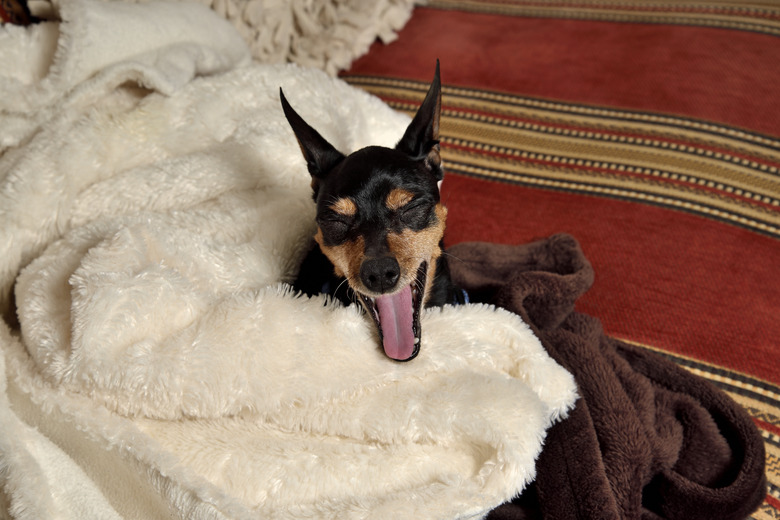Does My Dog Need A Blanket At Night?
It's cold out and you're wondering if your dog bed is enough to keep your dog warm. If you aren't sure whether your new pup needs more to keep her warm, ask them! Just kidding. Being a dog owner would be so much easier if we could just ask our dogs whether they are comfortable or not. But since we can't do that, it takes getting to know your dog's personality and preferences, and reading some clues.
Dog breeds and cold weather
Dog breeds and cold weather
Some dog breeds are more suited to cold weather than other dogs. Dog owners who live in cold climates, and who want to continue with year-round outdoor activities, may want to investigate dog breeds that can handle cold weather without their body temperature dropping too much. As a general rule, larger dogs and dogs with thicker coats can handle cooler temperatures. Alaskan malamutes and Siberian huskies, for instance, are bred for cold weather work.
Smaller dogs and those with thin coats, such as Chihuahuas, whippets, and greyhounds, need more cold weather protection because their bodies just can't generate enough heat. The Pedigree Foundation says that puppies will always need a coat to go outside in cold weather. When outside, small dogs' bellies can rub on snow, while long-haired dogs can accumulate snow or cold water on their hair, which makes them stay cold, even once they get inside the house.
Keep your dog warm
Keep your dog warm
Have you ever noticed that your dog likes to circle and scratch before they go to sleep in their dog bed? Some dog owners may not know that this is a natural instinct for your dog. In the wild, dogs pile up grass, leaves, or straw to create a type of "den." It's enjoyable to them, and more comforting to be able to do this when they have a blanket in their dog bed. Even though they no longer need to make a bed from pine needles any longer, it's believed that dogs still do this as a remnant of their wild ancestry.
Even if the temperature of your home is not too cold for a dog (the Pedigree Foundations says temperatures at or above 45 degrees Fahrenheit are safe for a dog), it can make a dog feel comfortable and secure to have a blanket to root around in. If they get too warm, they can move off of it or push it aside. You can always snuggle your dog extra on cold nights, but a blanket in their dog bed gives a new puppy, older dogs, or smaller dogs an extra level of comfort.
If your dog is shivering, staying curled up in a ball, or refusing to go outside, Best Friends Animal Sanctuary explains that those are clues your dog is not tolerating the cold. When choosing a blanket, look for something soft, washable, and sturdy. Avoid large knit holes that they can easily snag with their claws, or a fabric that they can easily tear up and swallow.
Dogs with medical conditions
Dogs with medical conditions
The American Veterinary Medical Association explains that dogs with some medical conditions may need an extra layer of protection, whether on their daily walk or when they're ready to snuggle in their dog bed. Diabetes, heart disease, kidney disease, or hormonal imbalances (such as Cushing's disease) may cause your dog to have a harder time regulating their body temperature. Your veterinarian can help you determine if your dog needs extra protection because of these conditions or just in general.
In conclusion
In conclusion
A blanket can help keep your dog warm and comfortable, even if they don't necessarily "need" it. Cold weather can zap the body heat of many dogs, such as when they go for a walk in snow or cold rain and then come home to snuggle. Larger dogs will be able to maintain their body temperature more consistently than a new puppy can, or older dogs, or smaller dogs, especially smaller dogs with thin fur such as Chihuahuas. Bottom line, give your dog a blanket in their dog bed at night or put one on the couch that they can snuggle in to. If they don't need, they'll move off of it.
Always check with your veterinarian before changing your pet's diet, medication, or physical activity routines. This information is not a substitute for a vet's opinion.



